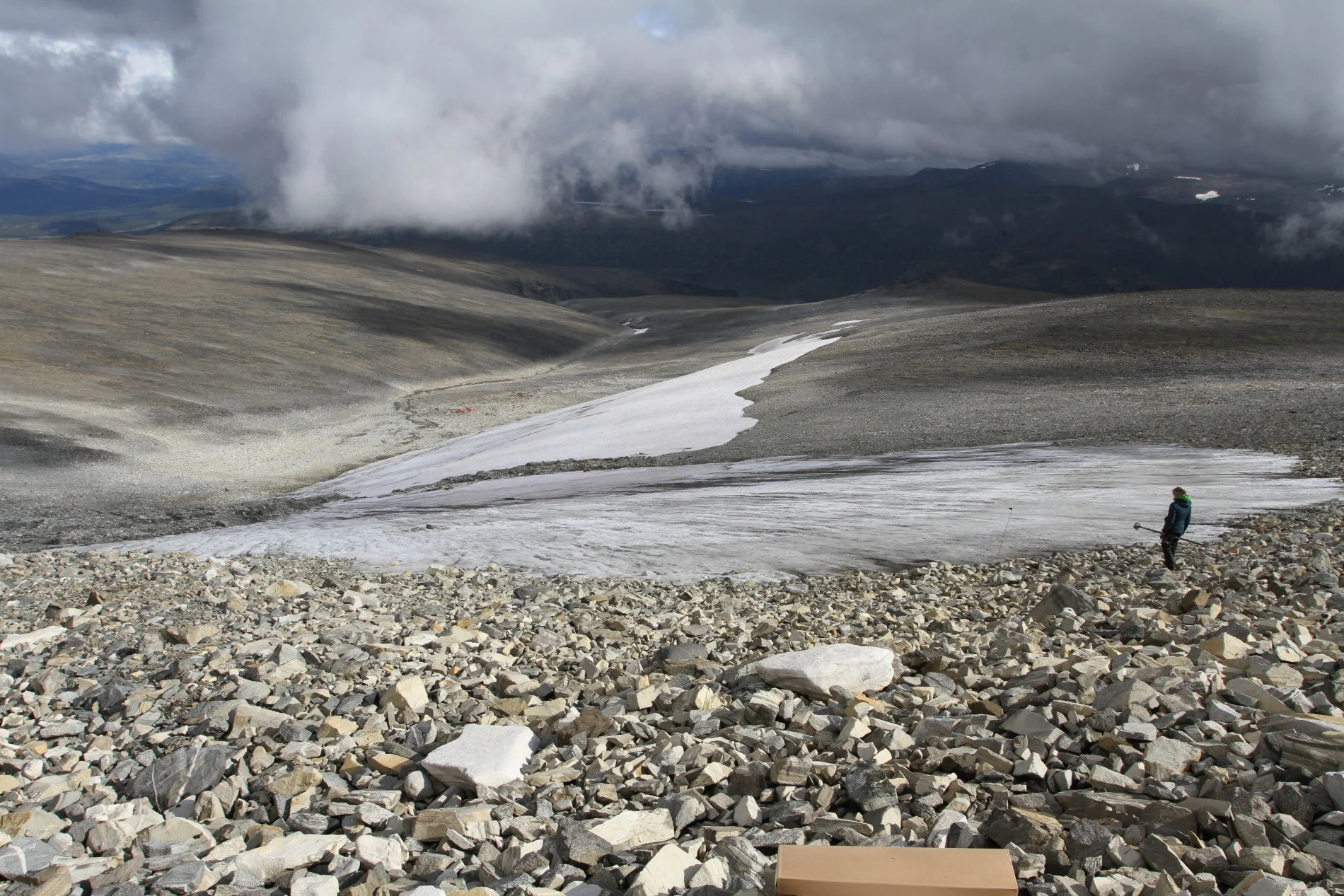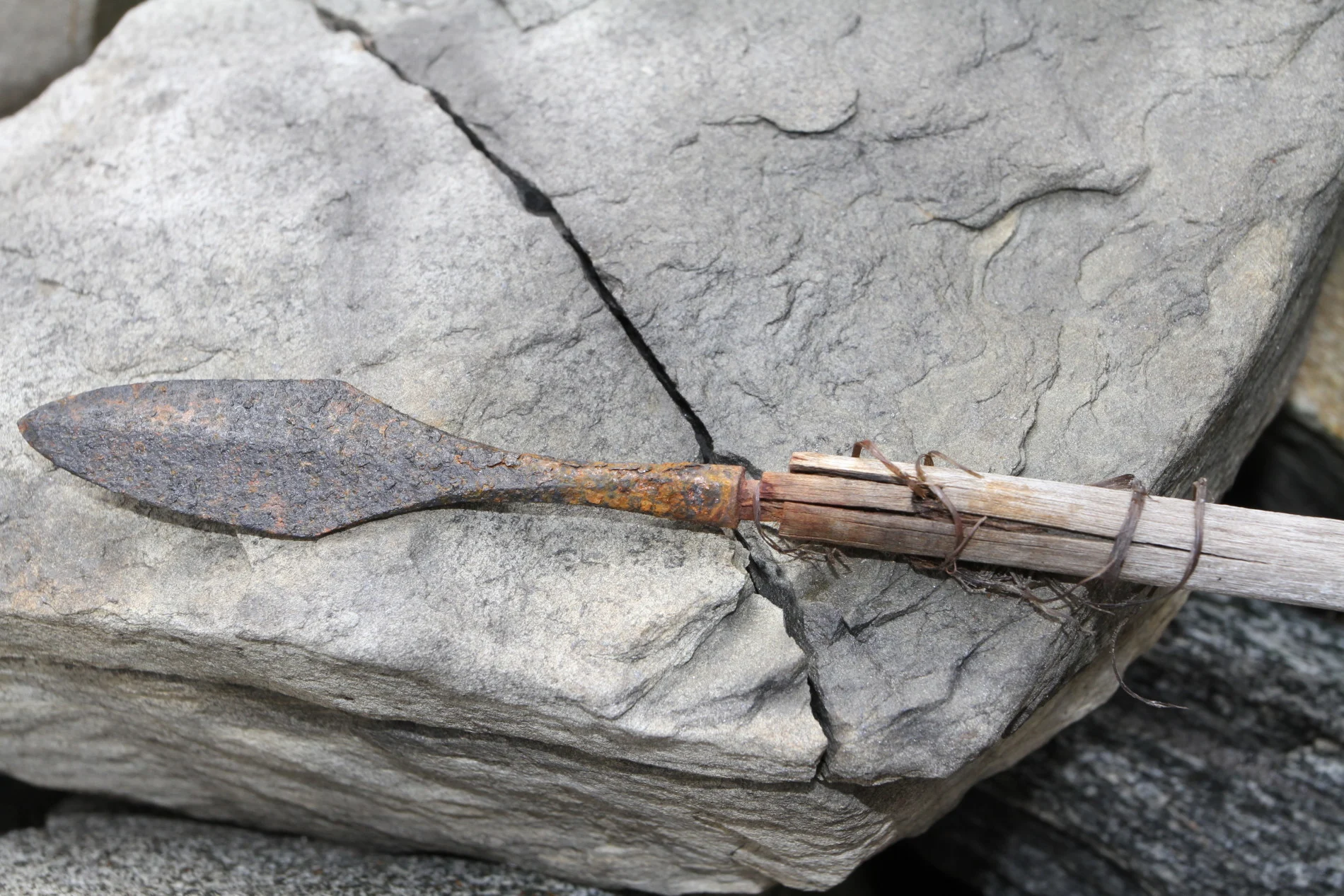
6,000-year-old hunting arrows revealed by melting ice in Norway
Warming atmospheric temperatures are revealing new archaeological opportunities across thawing European landscapes.
A growing number of archaeologists are venturing to glaciers and ice patches in hopes of discovering ancient items that were once frozen. A study published in The Holocene reports that researchers have discovered dozens of hunting arrows in Norway, some of which date back over 6,000 years.
The researchers discovered 121 artifacts in the Langfonne ice patch, a mountainous permafrost zone and an area where a 3,300-year-old shoe was discovered in 2006. An ice mass that was roughly 2.5 square kilometres covered this region during the 14th to 19th centuries, which eventually melted into three separate patches by 2014.

An overview of the Langfonne ice patch, taken from the ground on the top. Photo: Glacier Archaeology Program, Innlandet County Council
The researchers say that the ancient shoe discovery was a “modest beginning” of what the ice patch would reveal. The study says that most of the artifacts occurred in melting mountain ice and semi-stationary ice patches with permafrost underneath, which partly formed thousands of years ago. Due to the distribution of the artifacts, it is assumed that they were moved by shifting ice, meltwater, and other natural environmental processes.
RELATED: Lost Viking ‘highway’ and artifacts revealed by melting glaciers
The findings from Langfonne includes 68 arrows and five arrowheads, the oldest of which date back 6,200 years ago. Such a high volume of artifacts make Langfonne the most arrow-rich known ice patch site in the world. Other items that were discovered include bones, reindeer antlers, animal dung, and textiles. Two of the reindeer antlers were chopped, which the researchers say is a sign of human modification.

Close-up of a 1300-year-old arrow with the arrowhead still in the shaft and remains of the sinew which originally secured it. Photo: Glacier Archaeology Program, Innlandet County Council
The researchers say that the arrows and reindeer remnants indicate that these artifacts were probably lost during prehistoric reindeer hunting, which likely took place on hot days in July and August when reindeer spent time on the ice to stay cool. Eight stone-built hunting blinds, which have not been dated, were also found near this ice patch.
While the hunting arrows that were discovered are relatively well-preserved, the researchers note that the repeated melting and refreezing of these objects and transportation by meltwater could degrade the objects. The study says that a researcher witnessed meltwater transporting an arrow shaft on a day of heaving melting in September 2014, which demonstrates the concerns about how some artifacts may no longer be preserved long-term.

A 1300-year-old arrow as it was found lying on the mountain slope, close to the melting ice. Photo: Glacier Archaeology Program, Innlandet County Council
Part of what makes these findings so significant is that they are the oldest artifacts found at an ice site in Norway. Lars Pilø, one of the co-authors of this study, says Langfonne has “retreated dramatically” and is less than 30 per cent of the size it was 20 years ago.
“The melt of Langfonne is part of a much larger pattern of retreating mountains glaciers here in Norway and worldwide, linked to global warming.”
The Glacier Archaeology Program is a cooperation between Innlandet County Council and the Museum of Cultural History, University of Oslo. Visit the Secrets of the Ice website to learn more about their work.
Thumbnail credit: Glacier Archaeology Program, Innlandet County Council







